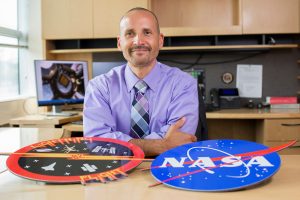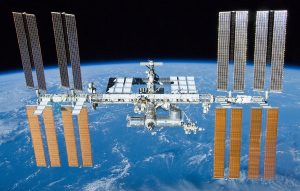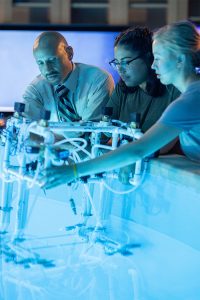Been there, done that – Gonzalez-Torres experience guides students to real-world thinking in astronautics
Author: John Burnett-Larkins
Author: John Burnett-Larkins
“What if this fails?”
“What if that fails?”
“Astronauts doing a hypothetical spacewalk on the moon have suffered a spacesuit malfunction. You have ten minutes to deploy a lunar rescue module that’s five miles away. Your job is to design a module that will effectively be able to respond and rescue them. How do you plan and design it?”

Those are the words of Tomas Gonzalez-Torres, former NASA mission leader and mission control flight director. He’s now an Department of Aerospace Engineering associate teaching professor. Those words cut to the core of what he teaches as part of the department’s astronautics curriculum and reflect the type of critical thinking that senior students are tasked with.
“In the astronautics section of the senior design 461 and 462 capstone courses the students are given a project with a space focus which typically is related to activities around the International Space Station (ISS) or more recently, the new NASA lunar program called Artemis. One prior project had the students design a lunar based vehicle that would be able to rescue two astronauts in trouble on the lunar surface.”
The NASA Artemis program will see the space agency land the first woman and next man on the moon by 2024, using innovative technologies to explore more of the lunar surface than ever before. What is learned on and around the moon will be applied to later sending astronauts to Mars.

Space mission-related matters is an area Gonzalez-Torres knows well. “Having worked at NASA for over 20 years with an operations-based focus, one of the foci in my teaching philosophy is to ensure that the students are thinking of the end-user when designing their vehicles. Can someone actually build what you have designed? Is the design overly complicated or straight forward to use? Have you thought about contingency failures?”
“I want the students to think of potential failures in their design and, if possible, ‘design out’ those failures, or add redundancy, or know what risks are being accepted if that failure cannot be designed out. This is part of the FMEA (Failure Modes and Effects Analysis) which the students perform on their design. Additionally, the students perform Ansys (a structural simulation software) analysis to ensure that their designs can withstand some of the basic loads situations they will encounter, and that they are not structurally over designing.”

Students are aided by a key research component within one of the department’s lab spaces in Howe Hall – a buoyancy tank, which resembles a very deep swimming pool. But its purpose is to allow students to test the design of scale model vehicles for maneuverability in a zero-gravity environment, like that on the moon, by navigating them through the water in the tank.
Gonzalez-Torres, a department alumnus who rose through the ranks of NASA space mission work, brings the all-important “been there, done that” perspective to instructing in the astronautics curriculum. He worked at NASA in the group that trained and supported the astronauts from mission control for the Extravehicular Activities (EVAs), commonly known as spacewalks. He led missions for the assembly of the International Space Station and repairs of the Hubble Space Telescope as well as tests of Space Shuttle heat shield inspection and repair techniques after the Columbia incident. He became manager of the EVA group and was then selected as a NASA Mission Control Flight Director. He is also director of the NASA-sponsored Iowa Space Grant Consortium, based in the Department of Aerospace Engineering, which supports STEM- and NASA-related opportunities for research, education and outreach to benefit students of many age groups. Read more about Gonzalez-Torres on his faculty member page of the department web site.
The opportunity to guide future aerospace engineers, and potentially future NASA employees, is not lost on Gonzalez-Torres: “I very much feel that a large role in my teaching at ISU is to prepare the students for the real world. Not just in a technical perspective. Making sure that they are not just crunching numbers, but that they understand what those results are telling them, and making sure that they can appropriately interact with their future peers and management. Making sure they are able to prepare a technical report, defend their design decisions, list their assumptions, deal with team conflict, develop basic management and leadership skills, and execute a technical presentation.”